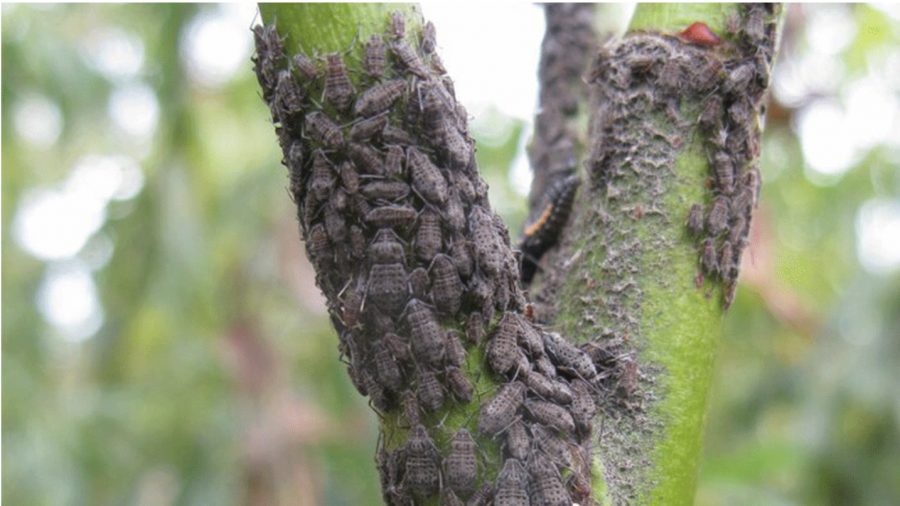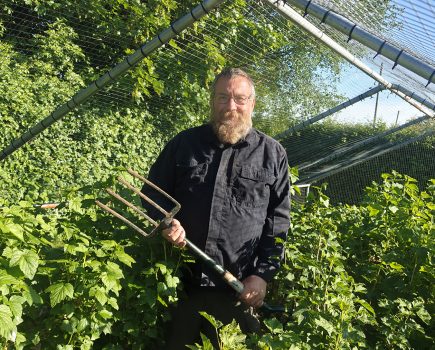The RHS is calling on gardeners to send in sightings of the giant willow aphid (Tuberolachnus salignus) to help learn more about this elusive species and the ways it interacts with garden plants.
One of our largest aphid species, these eye-catching true bugs are close to 6mm long with a distinctive sharklike fin, called a tubercle, on its back. Their lives are shrouded in mystery with very little known about where they spend most of the spring and why they have their characteristic dorsal fin.
RHS entomologists are keen to better understand their lifecycle in order to help solve the mysteries of this intriguing insect. The RHS is therefore inviting gardeners to share their sightings of giant willow aphids on the RHS website and track any they find in their gardens this spring. Giant willow aphids are regularly seen from July to February, with a peak in sightings in autumn. Gardeners should look out for them on willow in particular, but the RHS would like to know if they are seen on other plants and especially if they are seen between February and the end of May.
They may retreat into the crevices on bark to hide from predators but otherwise the large insects should be easy to spot with the naked eye. They are most likely to be found on the stems and branches of trees. The giant willow aphid does not cause significant damage to their host plants in gardens or the wider countryside, as the trees can withstand feeding by these insects.
In May 2022, colonies were found on a quince tree (Cydonia oblonga) in Hertfordshire, a new host for this aphid. They had previously mainly been found on willow and occasionally on other trees including apple and poplar.
The aphid is rarely found between April and June and entomologists have been left speculating as to where they go during this period. This makes the May sighting even more unusual, and by June the insects had disappeared from the quince.
Find out more about giant willow aphids and submit sightings – which must include an image – at: www.rhs.org.uk/biodiversity/large-willow-bark-aphid
More news like this can be found in The Country Smallholder magazine. Subscribe here.
For FREE updates from the world of smallholding, sign up for The Country Smallholder newsletter here.








